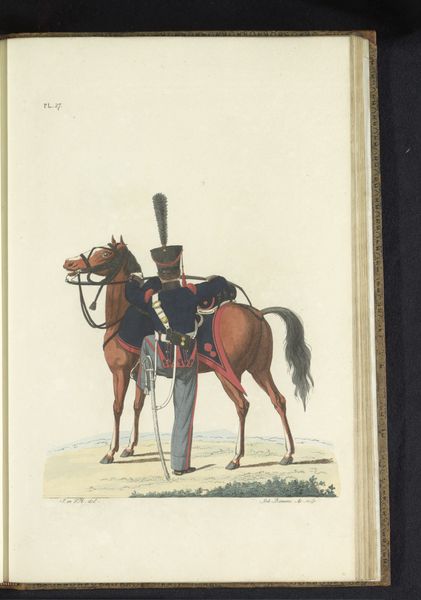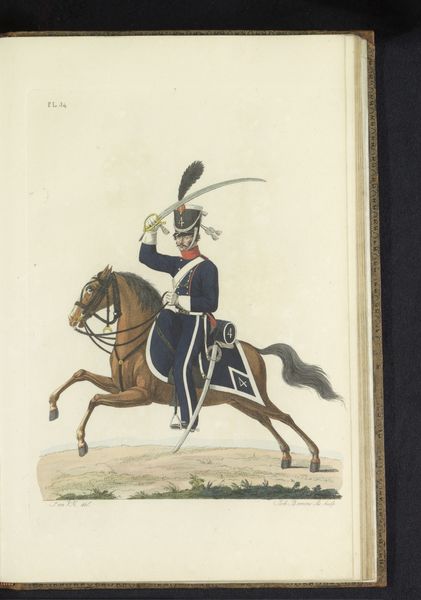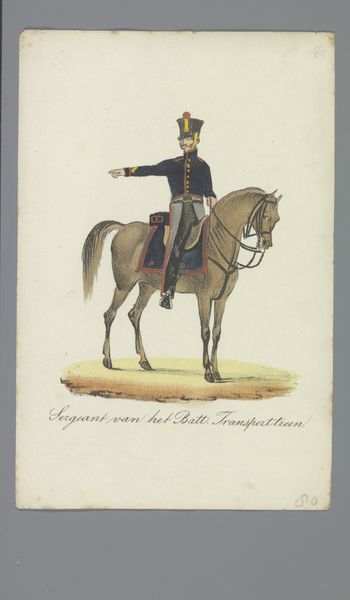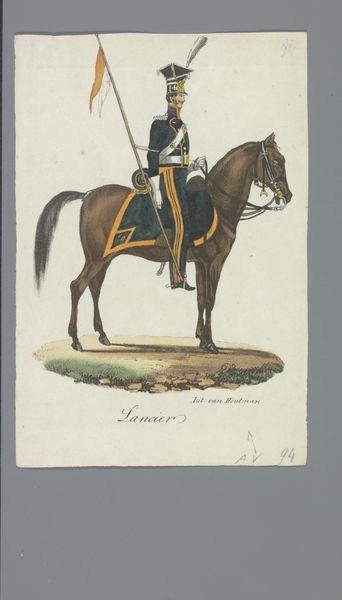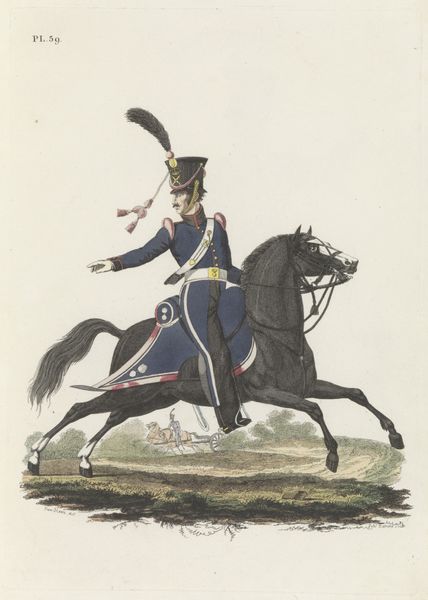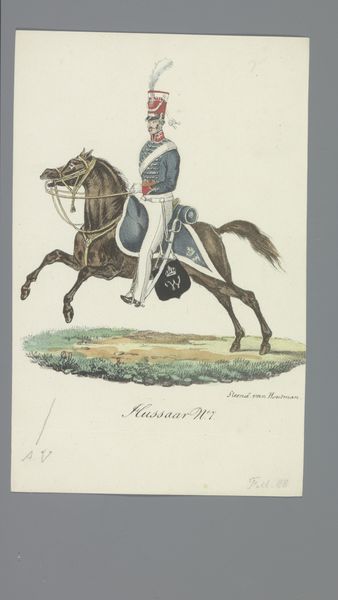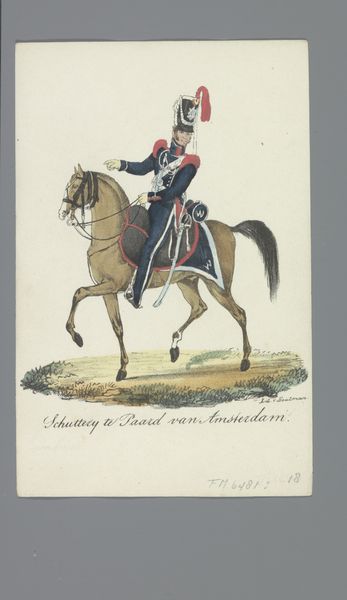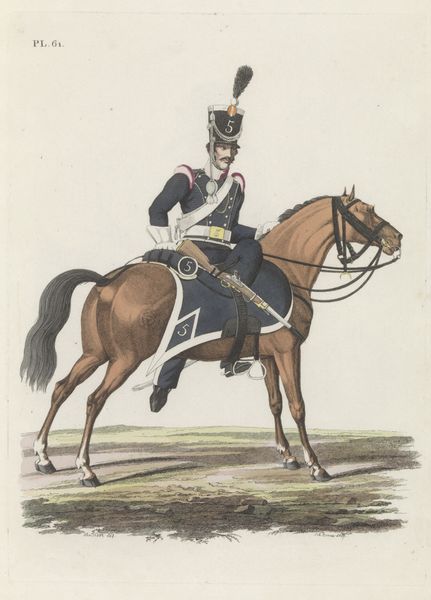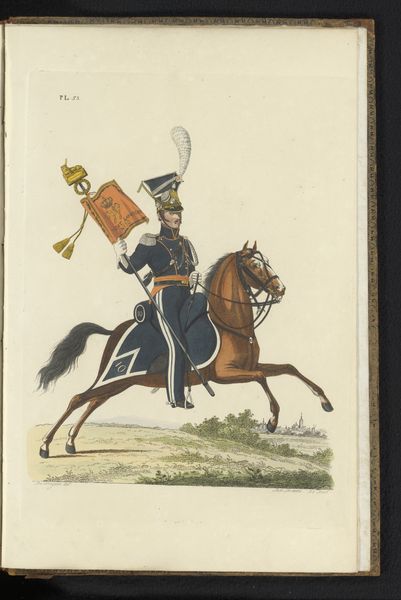
coloured-pencil, print
#
portrait
#
coloured-pencil
# print
#
landscape
#
coloured pencil
#
romanticism
#
genre-painting
#
history-painting
#
watercolor
Dimensions: height 300 mm, width 205 mm
Copyright: Rijks Museum: Open Domain
Editor: This is "Lancier, te paard, in groote tenue" from 1823 by Joannes Bemme. It's a colored pencil print. The officer seems very formal, stoic, and the horse, though powerful, seems almost like a prop. What story do you think this artwork is trying to tell? Curator: I see a careful construction of power and identity, rooted in a very specific socio-political moment. This isn't simply a portrait; it’s a representation of authority meticulously crafted to convey a particular message. What does "groote tenue" suggest to you in terms of class and status? Editor: It sounds like "grand attire," so definitely something very formal. It does seem to be about presenting an ideal, not necessarily reflecting reality. Curator: Precisely. Consider the historical context. 1823, just after the Napoleonic era; what narratives were being constructed and for whom? The idealized figure of the Lancier becomes a symbol of restored order, but whose order and at what cost? Is the landscape merely a backdrop, or does it tell a story of displacement and control? Editor: I see your point. The backdrop *is* quite bare, so this piece seems focused on control and not liberation. I guess the officer has become a tool. Curator: Exactly. And think about the role of art like this in perpetuating those power structures. By analyzing its visual language, its historical setting, we start to see how it functioned within broader systems of privilege. Does that change your initial perception? Editor: Absolutely, it shifts my view. It's no longer just a portrait but a deliberate statement about authority at a particular moment in time. I’ll definitely look more closely at the relationship between the subject, the setting, and the intended message. Curator: That's the first step in understanding art as an active participant in historical and social narratives. Editor: Thank you. That’s given me a lot to consider moving forward.
Comments
No comments
Be the first to comment and join the conversation on the ultimate creative platform.

